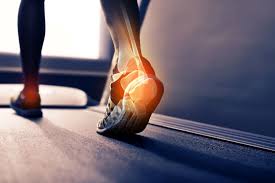Foot pain is a common challenge for runners, often hindering performance and causing discomfort. Understanding the causes, identifying injuries, and following prevention and treatment strategies are beneficial when it comes to maintaining foot health and longevity in the sport. Here, you can explore common foot pain issues faced by runners and learn about available solutions.
What Causes Foot Pain in Runners?
Many runners experience foot pain due to factors like overuse, improper footwear, or biomechanical imbalances. Identifying the cause of the discomfort early is beneficial when it comes to preventing further complications. Accurate diagnosis is also helpful and often requires a combination of clinical evaluation and diagnostic testing to uncover underlying issues.
What are Some Common Foot Injuries in Runners?
Running can take a toll on your feet and ankles, leading to common injuries. Some of the most frequent issues runners face:
- Plantar Fasciitis: Caused by inflammation of the plantar fascia, the thick tissue connecting the heel to the toes. It’s a common reason for heel pain among runners.
- Stress Fractures: Small cracks in the bone from repetitive impacts, often due to increasing mileage too quickly. These cause localized pain.
- Achilles Tendinitis: Irritation of the Achilles tendon leading to stiffness and pain at the back of the ankle, usually from overuse or poor running technique.
- Ankle Sprains: Occur when ankle ligaments are stretched or torn, often from running on uneven surfaces or sudden movements.
What are Some Prevention Strategies?
Proper footwear and orthotics are beneficial for preventing injuries. Running shoes that match your foot type and gait can significantly reduce the risk of injury. Orthotics can also provide extra support to address biomechanical issues. Incorporating stretching and strengthening exercises is also helpful.
Pre-run and post-run stretches target the calves, ankles, and feet. Strengthening exercises, such as toe curls or heel raises, help build muscle resilience. Gradually increasing your mileage is key while avoiding sudden spikes in distance or intensity to help minimize the risk of overuse injuries.
What are the Treatment Options?
Treatment options for foot pain include several approaches depending on the severity and type of injury. The RICE method (Rest, Ice, Compression, and Elevation) is a simple and effective way to reduce swelling and alleviate pain caused by acute injuries such as sprains or tendinitis.
Physical therapy also plays a role in recovery, helping to improve strength, flexibility, and range of motion through targeted exercises and techniques. In cases of severe or persistent foot pain, medical interventions may be necessary to address underlying issues.
When Should You See a Specialist?
If you’re experiencing certain symptoms, it may be time to consult a specialist. Here are some key signs to watch for:
- Persistent Pain: Pain that doesn’t improve with rest or home remedies should be evaluated further.
- Numbness or Tingling: These symptoms may indicate nerve involvement and require prompt medical attention.
- Signs of Infection: Swelling, redness, warmth, or fever may signal an infection and require immediate care.
Prioritize Your Foot Health
Proactive measures, such as wearing proper footwear, engaging in regular strengthening exercises, and addressing pain promptly, are helpful when it comes to maintaining foot health. Establishing a relationship with foot and ankle specialists is equally beneficial for receiving personalized care and preventing foot and ankle injuries. Schedule a consultation with a specialist today to address foot pain and elevate your running experience.
Related Articles
What’s the Connection Between Neck Pain and Tension Headaches?
What to Expect During Your First Visit to a Restorative Dentist
Differences Between a Pediatric Root Canal and an Adult Root Canal





